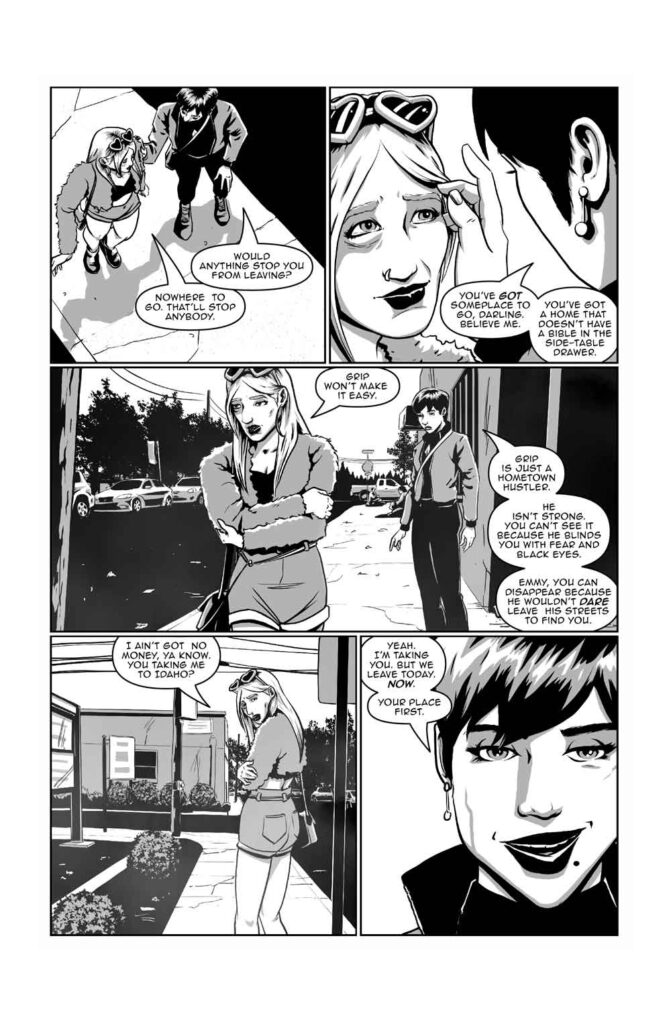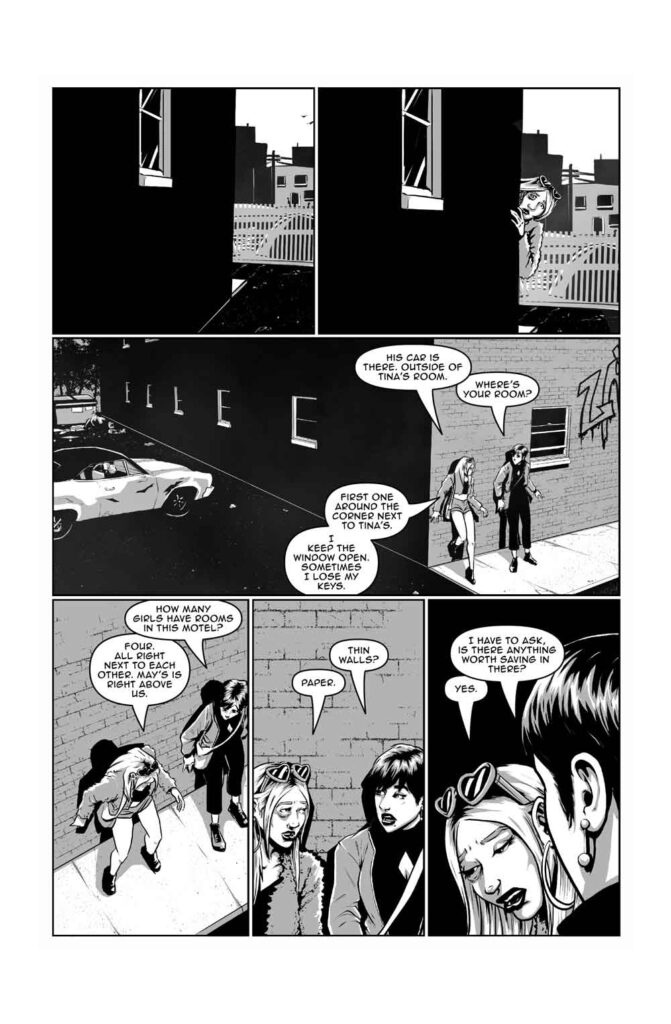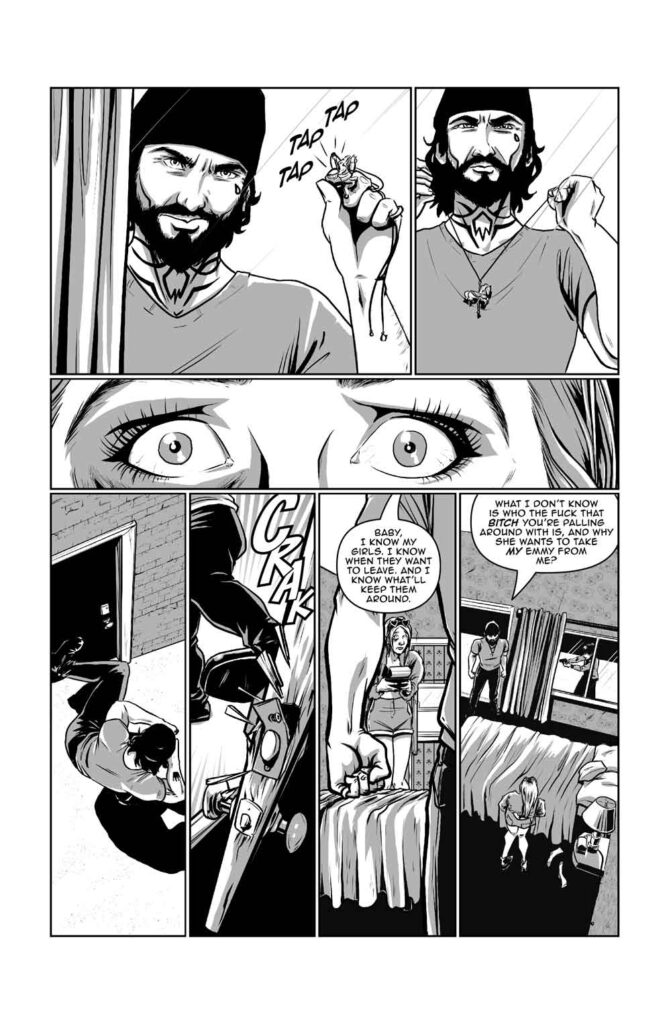
- Home Free #1
- Coffee Time Comix
- Written by John Kratky
- Illustrated by Michelle Lodge
- Letters by Eduardo Camacho
As a genre, noir has some very specific benchmarks. There’s the somber mood and dark tones (check). Noir is also generally defined by the moral flexibility of its characters, up to and including the hero (check). Finally, there’s a general atmosphere of pessimism, particularly seen in the story’s protagonist (CHECK). For the most part, I’ve seen the word overused in the realm of entertainment, usually in an attempt to entice an audience. Case in point, let’s take a look at the opening pages of Home Free.
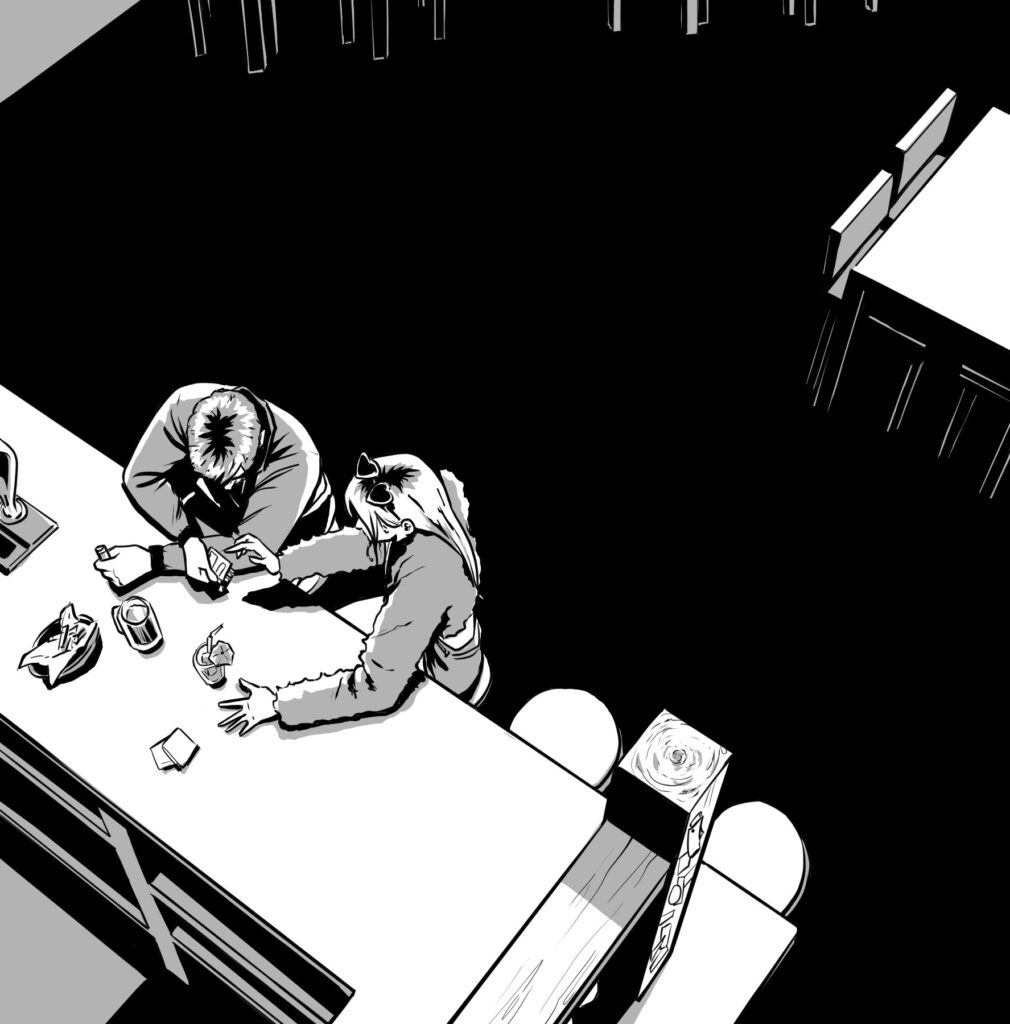
Sitting at the bar in Earl’s Fish Basket Pub (way to hedge your bets, Earl), two strangers have a chance meeting. Sara sees something in Emmy… something familiar. Maybe it’s the haunted look in her eyes, or possibly in the shiner that’s partially closing one of them. Either way, Emmy has the eyes of a woman aged well beyond her years, someone who’s lived a life of tragedy and disappointment. Something that resonates with Sara’s own haunted past and stirs up feelings she’d maybe thought long buried. Whatever it is that urges her to kick up a conversation, it’s the beginning of a story that is looking to both earn and own the noir tag in is description.
If there were nothing else going for it, Home Free could easily rest on the attributes of its artist, Michelle Lodge. Starting with a black & white presentation, and building higher on some outstanding work in character design, Lodge has set a pretty high bar for the rest of the title’s creative team. From a reader’s first look at Sara & Emmy, we’re shown that each of these women has a Past (yes, capitalized on purpose) with weight and consequence. Sara has a life of hard lessons visible on her face in the two obvious scars marking her features. Her hair, cut into a no-nonsense bob, could be showing a woman ready to drop everything and go at a moment’s notice. Beyond the design, Lodge shows a great attention to detail in every aspect of her illustration. Her backgrounds are full of dingy buildings scrawled with graffiti. The streets are littered, rain gutters need to be cleaned, and sidewalks are cracked. None of that is exactly necessary to the story, but all of it together builds on the noir attitude. And I have to mention how awesome it is when a character draws a pistol and shows more than just the usual straight-armed stance… Michelle Lodge, your reference book must be full and your game is on point.
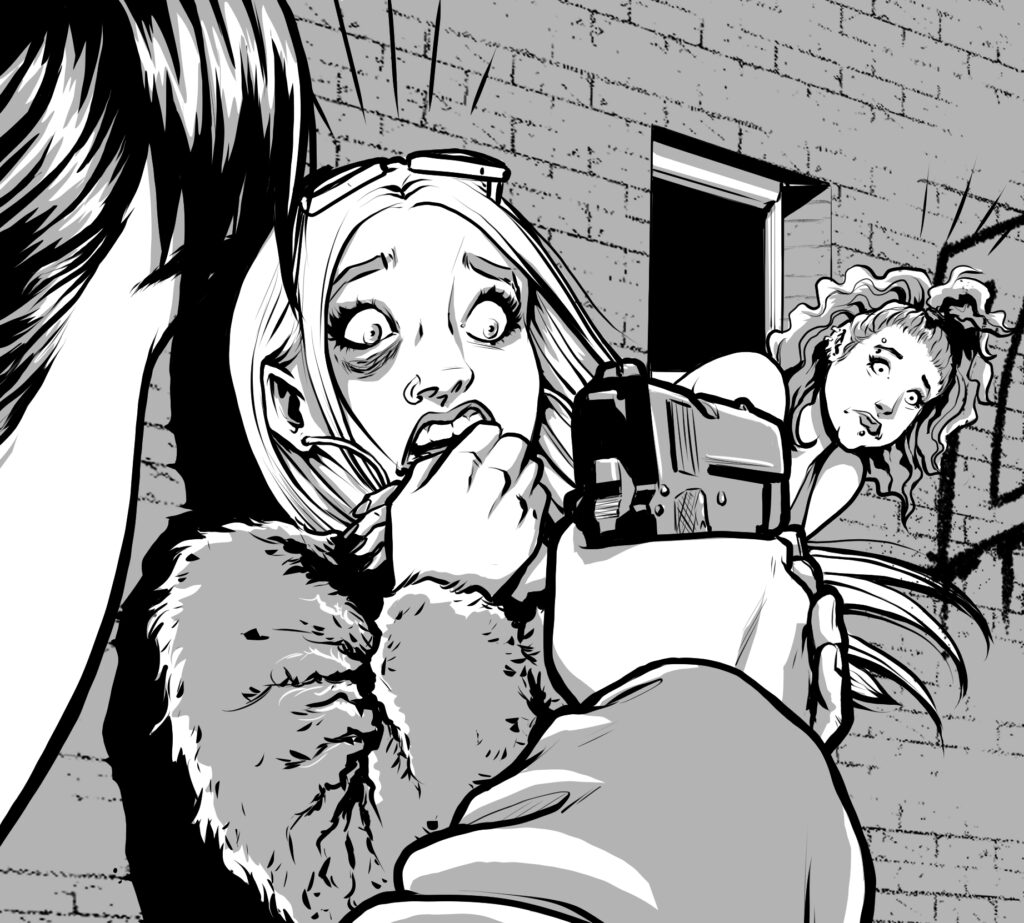
Okay, time to gush about something else now…
Let’s get to this heavy, moody, uber-gritty story written by John Kratky. On my first read, I spent some time shaking my head at the melodramatic, occasionally over the top dialogue. And then I realized that I was being a little thick-headed and reminded myself that I was reading actual, honest to god noir. After that, the head shakes were all appreciative and marking moments in the comic where Kratky wasn’t just following a formula. Sure, noir (wow, I’m really typing “noir” a lot in this review…) is full of tropes and while he is paying homage to the genre’s style, Kratky isn’t blindly following the playbook. He’s following the formula by including the mandatory femme fatale, and then breaking stride by casting her in the role normally occupied by the square-jawed anti-hero. Sara isn’t the normal protagonist, as she isn’t coming into the story as the world-weary PI, but as a person recognizing something in Emmy that triggers a protective response. The shift may be taking these two embattled women in the same direction, but the change in our entry into the story makes it a little more interesting than the typical dame in distress theme.
I’d be cutting corners if I didn’t give Eduardo Camacho the nod for his job in lettering. I’ve argued repeatedly that a comic letterer isn’t just throwing words down on the page. If that’s all the job was, the writers would be doing it. Camacho keeps the story moving along, dialogue bubbles and text boxes keeping pace with the action without getting in the way of the art. He gives emphasis where it’s needed, but doesn’t hang up on gimmicks and migraine inducing fonts to get the job done. It’s smooth, letting the reader stay in the story instead of creating speedbumps as an attempt to show he’s got game.
Home Free is a hard-hitting story, not necessarily about redemption but about empathy. As Sara sees the signs in Emmy, she’s given the choice of going on about her business or taking the time and the risk to stop and offer a hand up. They both have a rough road ahead of them, but I’d be shirking my duties as a reviewer if I didn’t remind you, sweet Summer child, that noir is also often marked by a distinct lack in happy endings for everyone involved. Hopefully this creative team gets the chance to follow through with what they’ve got started here, to provide a finish that may not be happy but can at least be earned.
Final Score: 12/13
